When we met with our friends Chris and Steve from Eat Walk Learn and told them we were heading to New Hampshire, they said that the Black Heritage Trail of NH was a can’t-miss.
It combines all our favorite things – free, dog-friendly, walking to see a city, black history, history in general and learning stuff. So on their recommendation we stopped in to the office, I grabbed a map (free) and a guide book ($15 – so worth it) and off we went.
The Black Heritage Trail takes you to see historic properties around Portsmouth, NH. Many of them have their own plaques and information and some are located on the Strawberry Banke Museum campus. However, what makes this trail special is that using historical records we get an insight into the story of black men and women in Portsmouth, NH before their stories were often told.
You can download the trail map here; we’ve also created the Google Map below with all the locations pinned on it.
Stop 1 – Black Heritage Trail of NH Offices
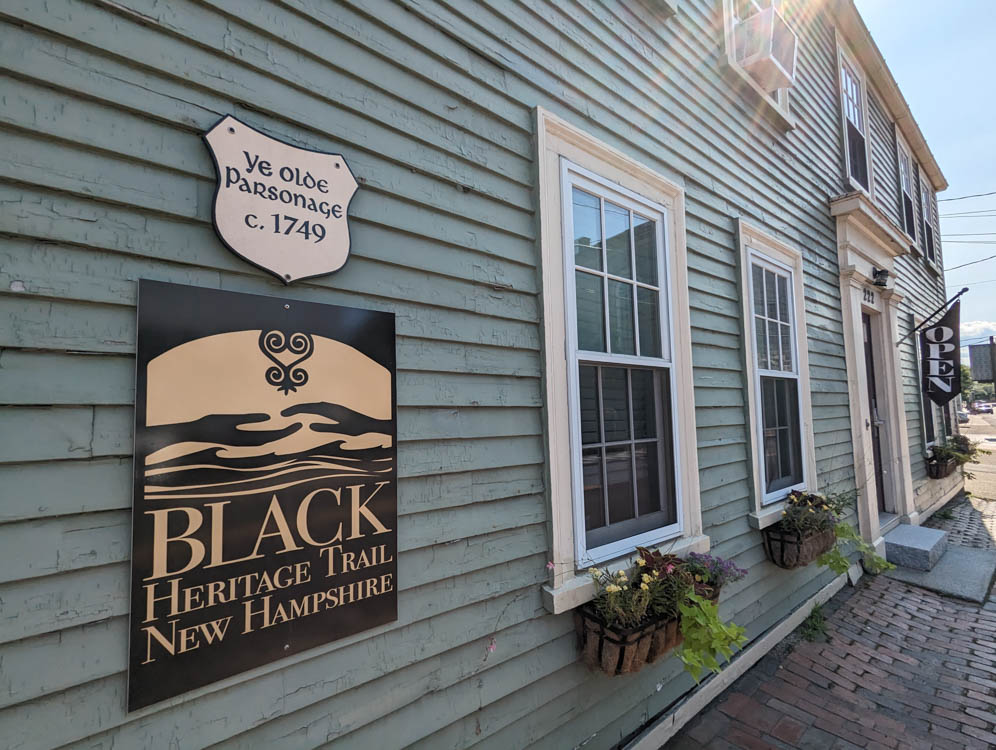
We chose to start with stops 1-10 and see how that went. It was much quicker than we anticipated and decided that we could get to all the spots on the map that afternoon. We didn’t realize until the end that there are more sites outside of the downtown Portsmouth area, so we didn’t go and see those. You’ll just have to take a trip there yourself.
We also didn’t go in the number order, but along the streets to wrap us back around to our car. We started at 1 and went to 2, then 6, 7, 8, 9, 10, 5, 4 and 3. Then we took a little water break with Truffles and went on to 11, 12, 13, 14, and 15. Our final grouping was 16, 17, 18, 20, 21, 23, 22 and 24. We parked near the corner of Marcy and State Streets; using the Park Mobile app we were able to extend our time easily after the initial 10 sites and again when we were at site 20. However, we’ve put them in numerical order here in the post for you.
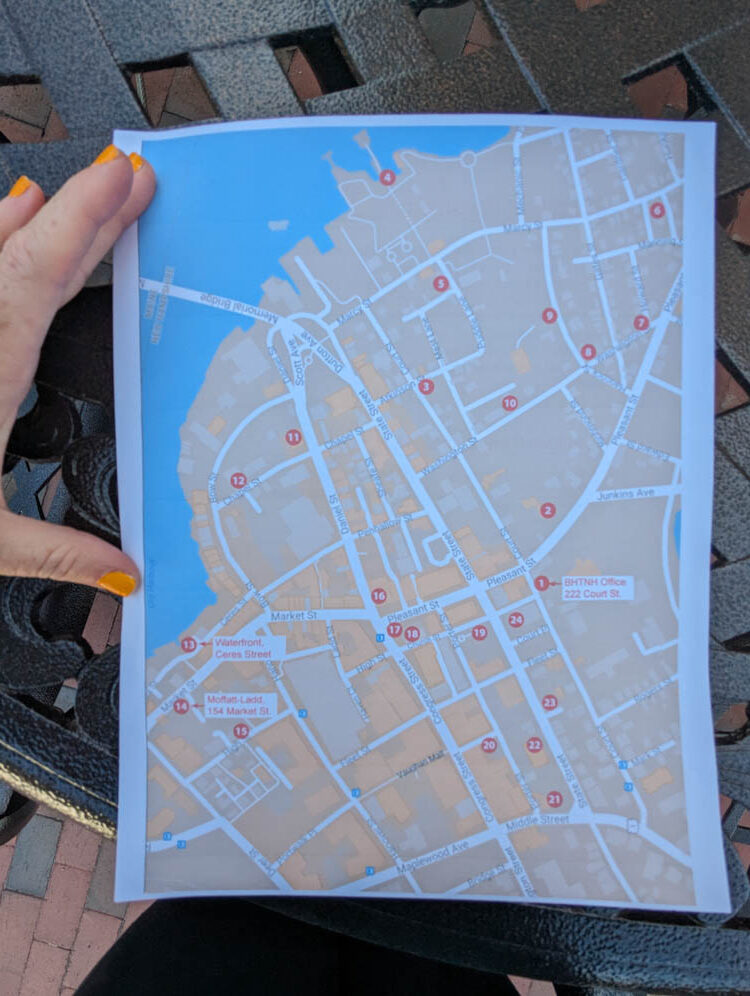
The guide book was worth getting. It had great extra information beyond the plaques on the buildings and some of the buildings don’t have plaques so it was really helpful. It also includes pictures of each site so you know which building or space you’re looking for. That was helpful more than once. It also identifies when the original building isn’t there any longer. It was a great resource and worth the purchase.
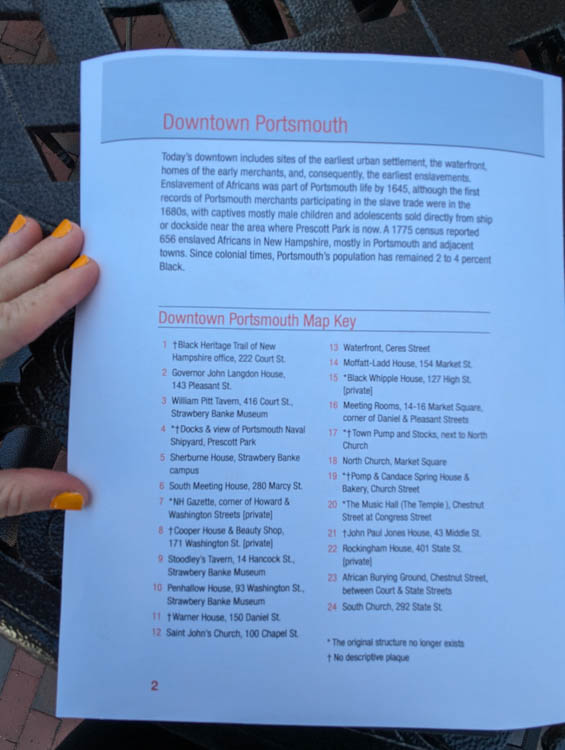
Stop 2 – Governor John Langdon House
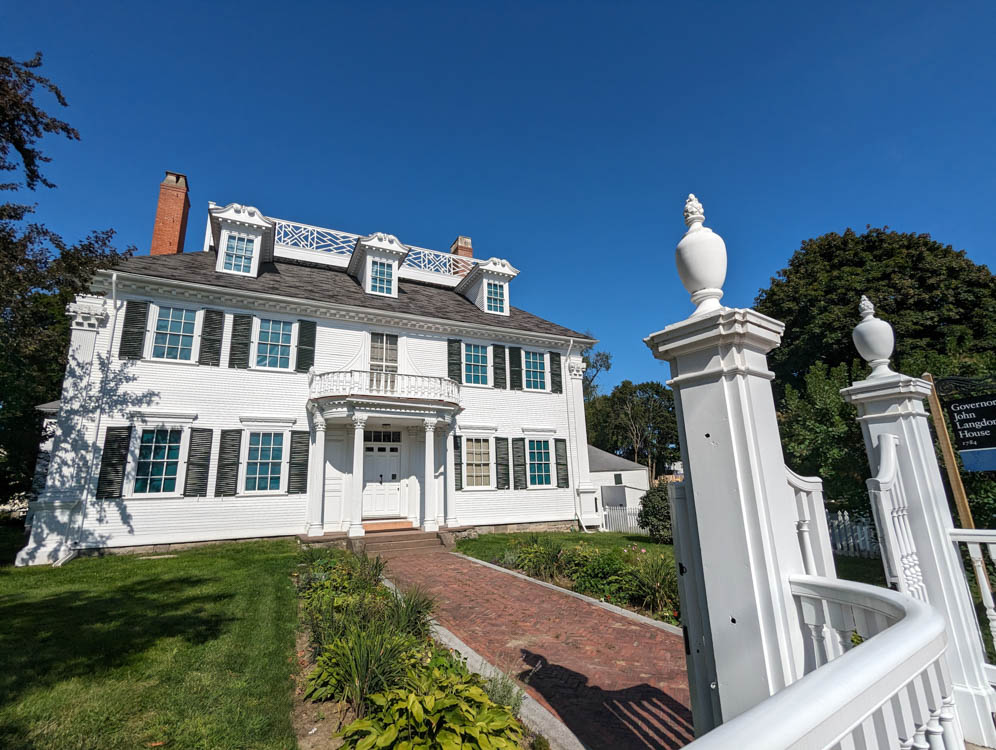
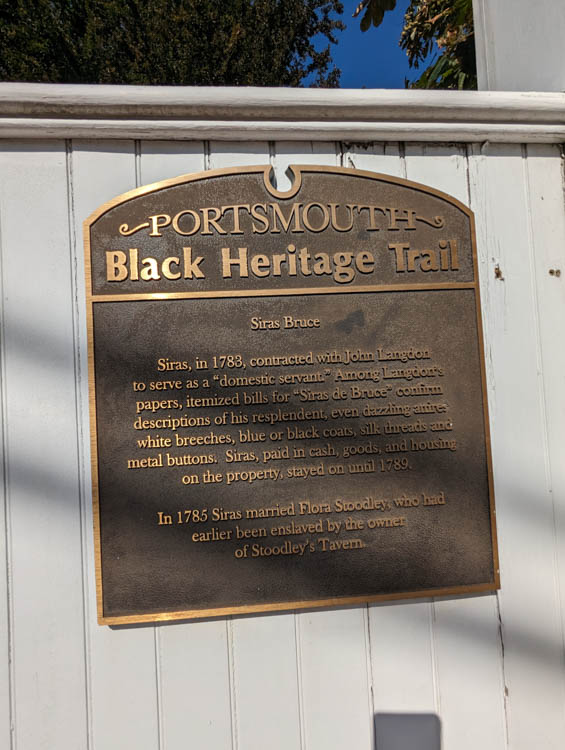
Stop 3 – William Pitt Tavern
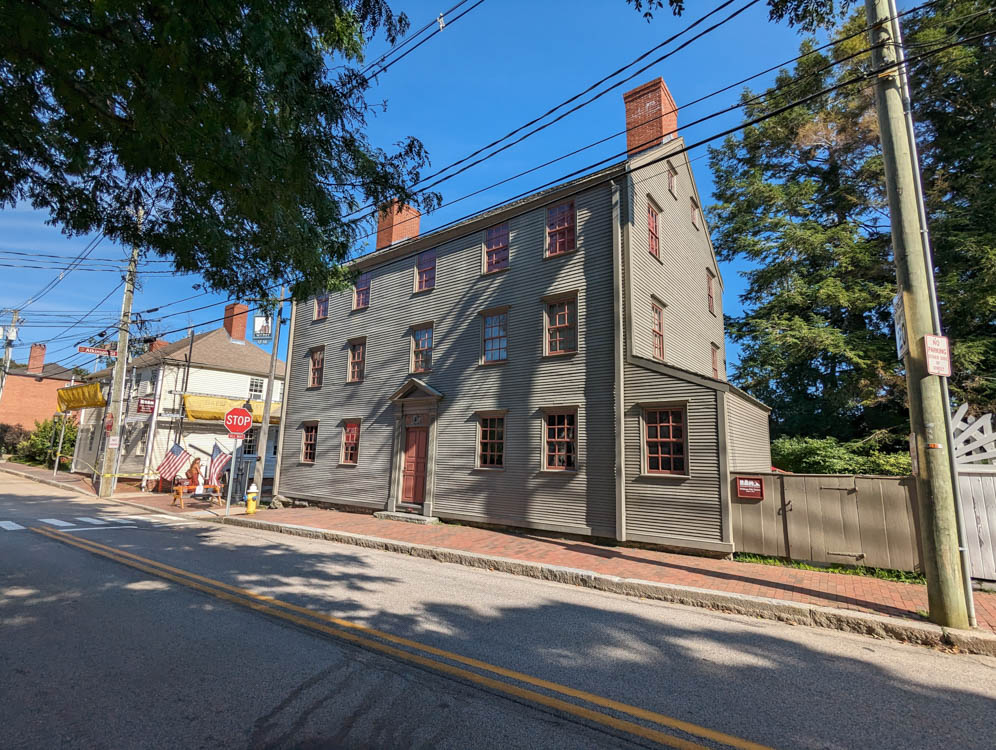
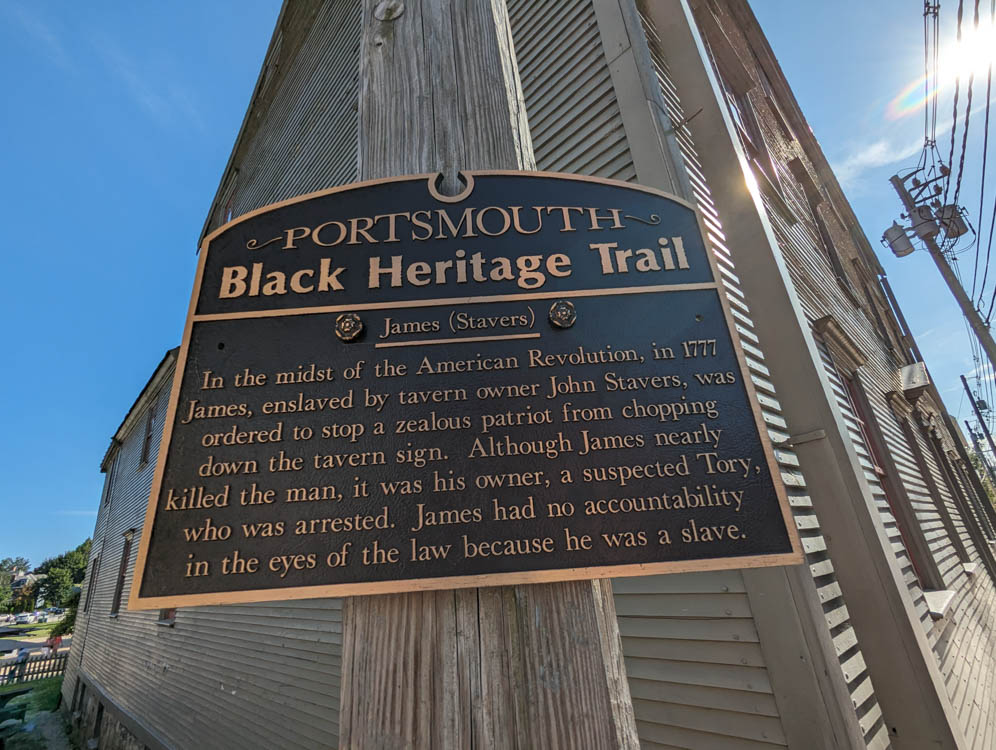
Stop 4 – Docks & View Of The Portsmouth Naval Shipyard
This is an area where slave ships would bring enslaved people for sale directly from the ship or the dockside. The first records of this are from the 1680s. Note that this dock is in Prescott Park which is not dog-friendly. Stephen waited with Truffles outside the park while I went and took the photo.
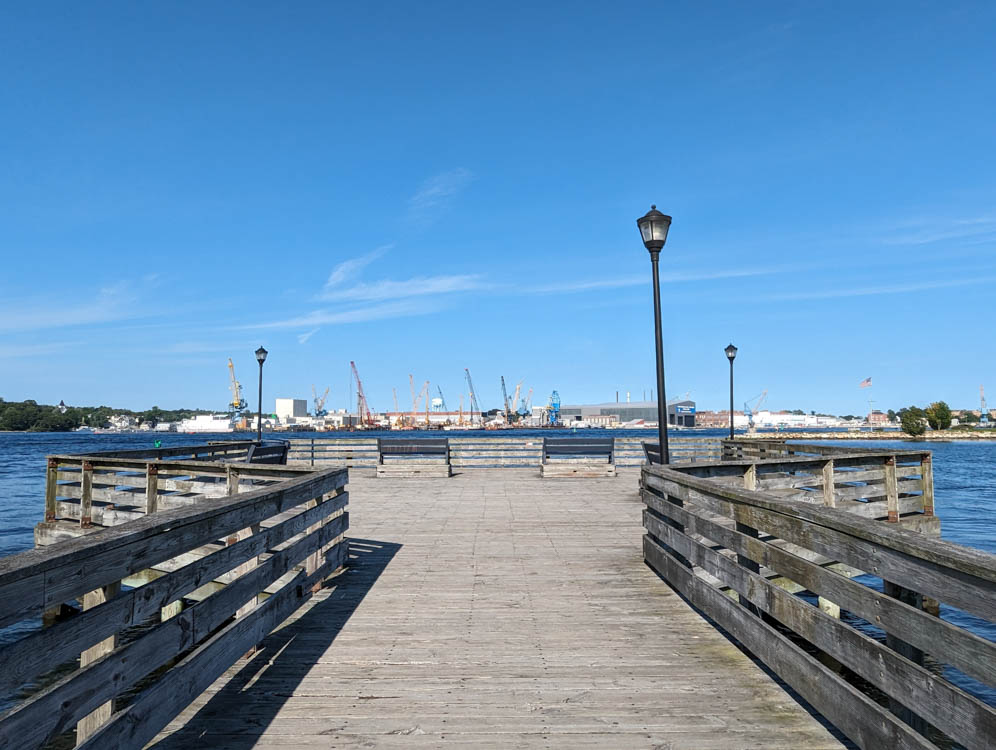
Stop 5 – Sherburne House
The properties that were on the Strawberry Banke Museum campus were all accessible to see close up from the outside with the exception of the Sherburne House. This one has a plaque, but as we didn’t have museum tickets we couldn’t go close enough on the campus to see it.

Stop 6 – South Meeting House
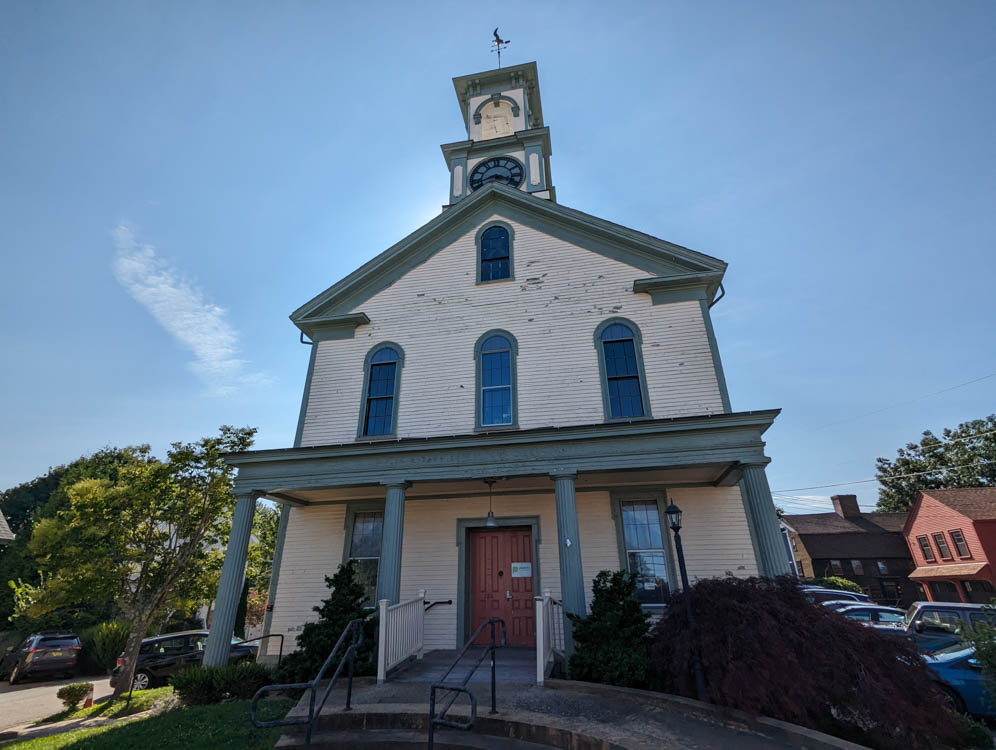

Stop 7 – NH Gazette
This is one of the locations where the original structure doesn’t exist. It’s also one of the sites that had an additional plaque and information about the history of the location beyond the Black Heritage Trail of NH.
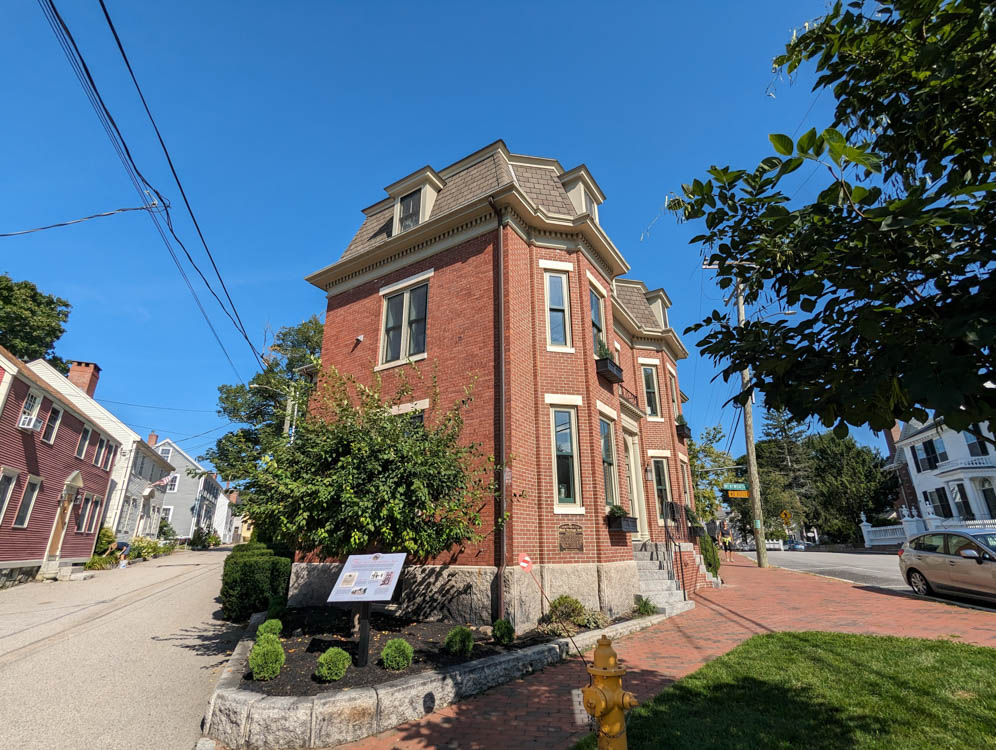


Stop 8 – Cooper House & Beauty Shop
A taste of what we learned from the guide book. “Rosary [Cooper] became Portsmouth’s first licensed Black hairdresser. She operated her shop and a boarding house for Black people here in their sixteen-room home.”

Stop 9 – Stoodley’s Tavern
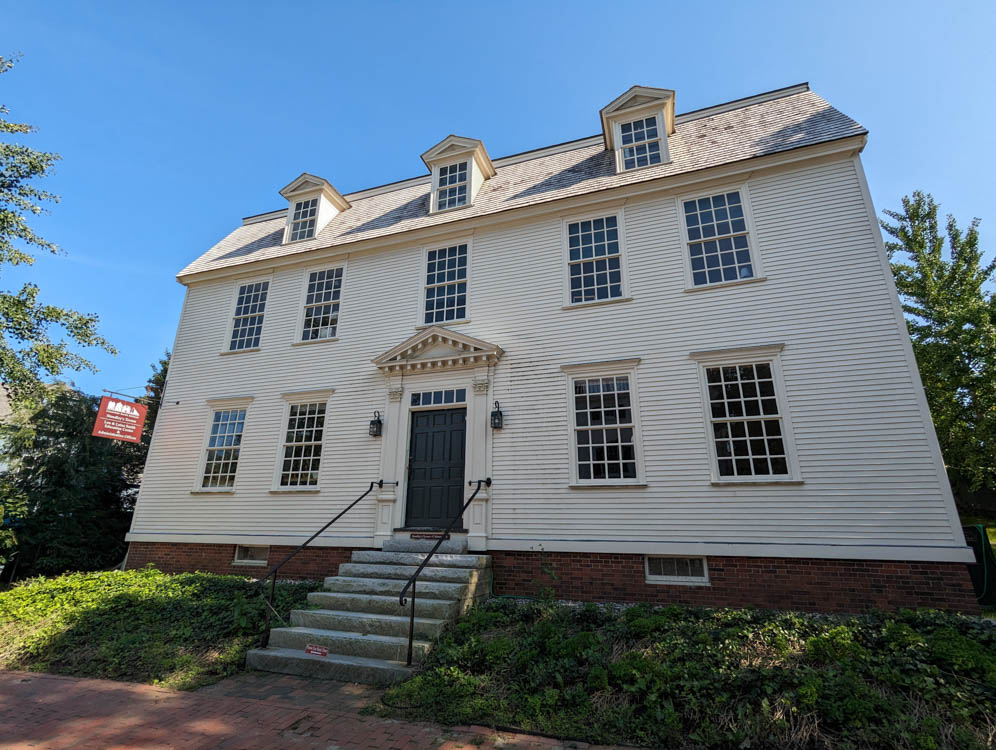
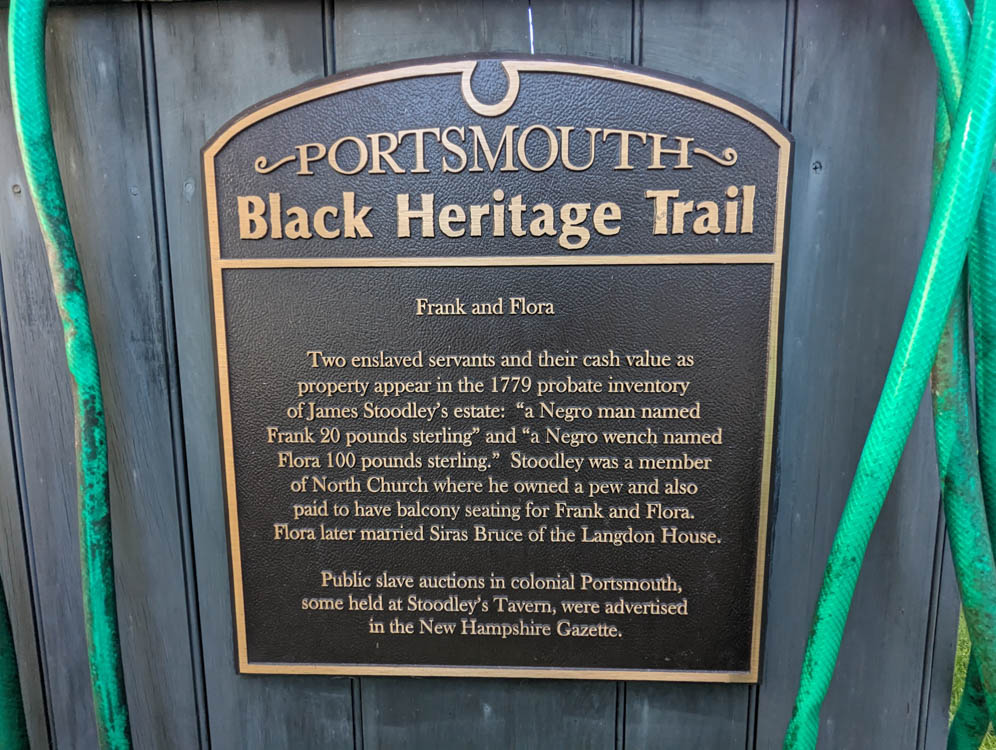
Stop 10 – Penhallow House (Under Renovation)
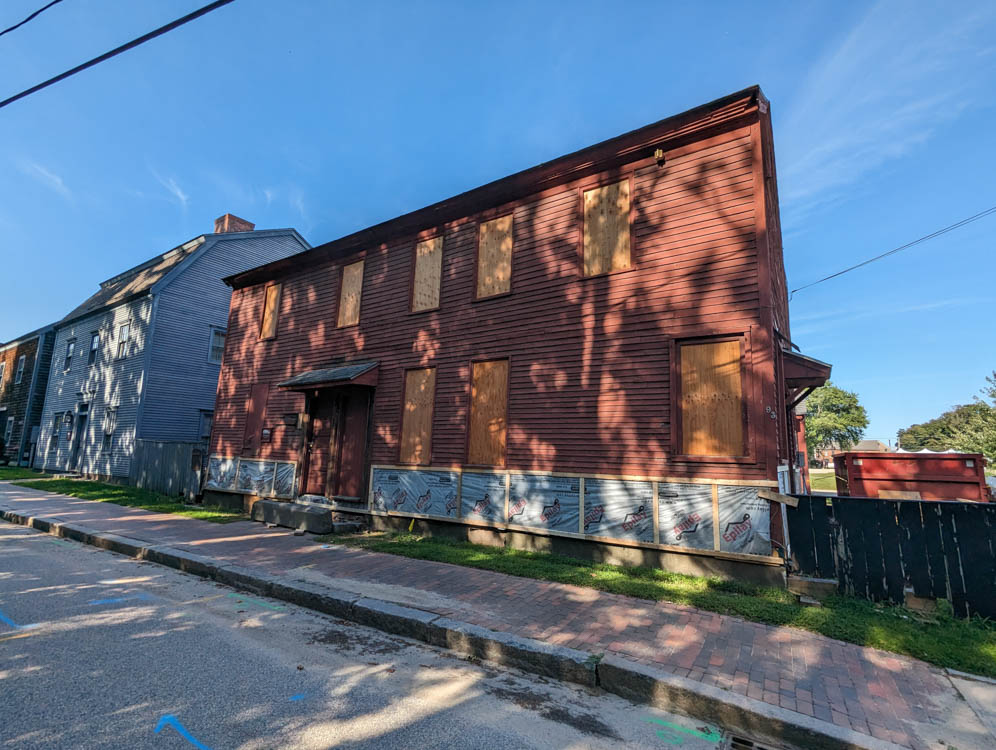


Stop 11 – Warner House
There isn’t a plaque here, but the museum does have information as you walk along the road to stop 12 that you can read from the sidewalk.
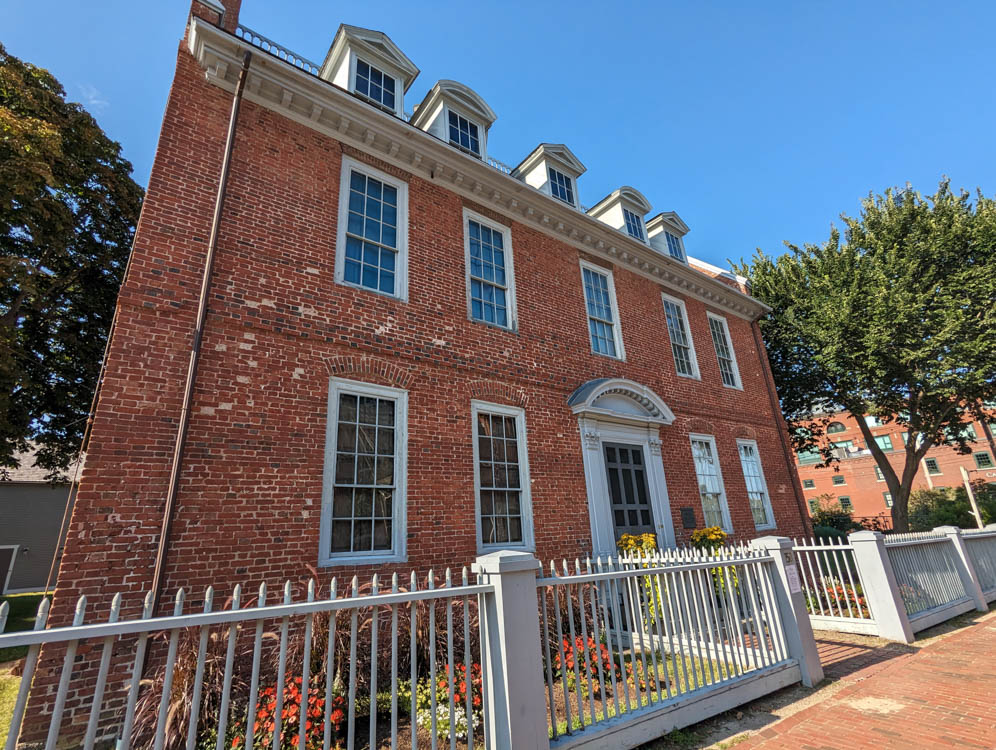
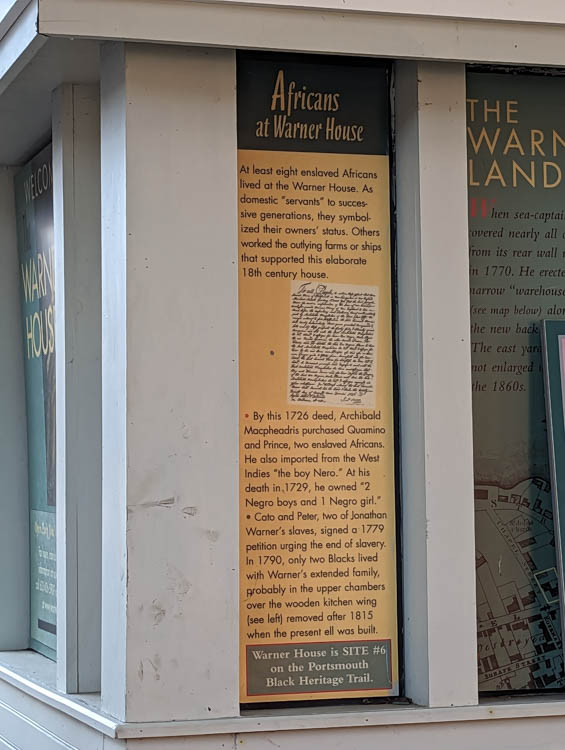
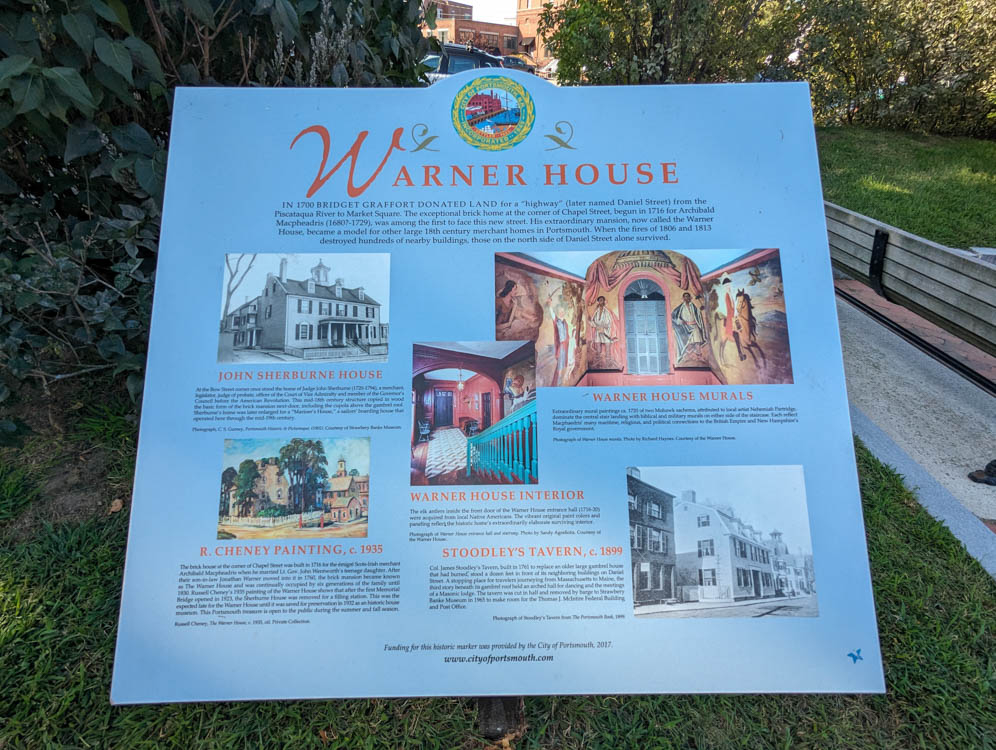
Stop 12 – St. John’s Church
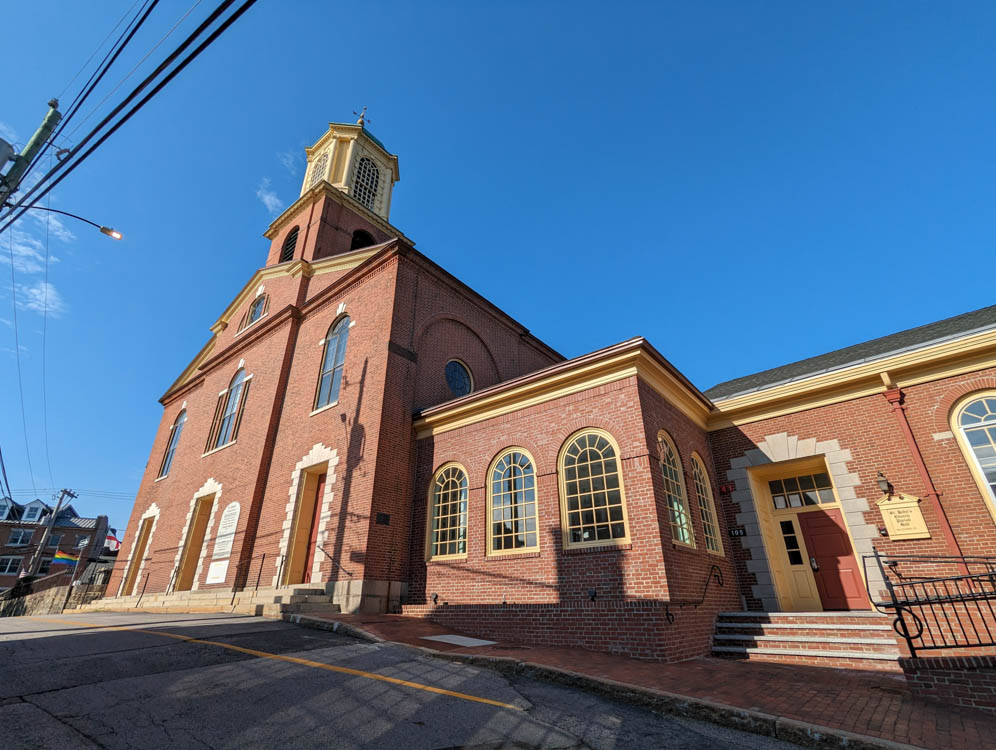

Stop 13 – Waterfront, Ceres Street
This is similar to the picture provided in the booklet. The plaque is farther down the street before you turn towards Market Street to go to stop #14.
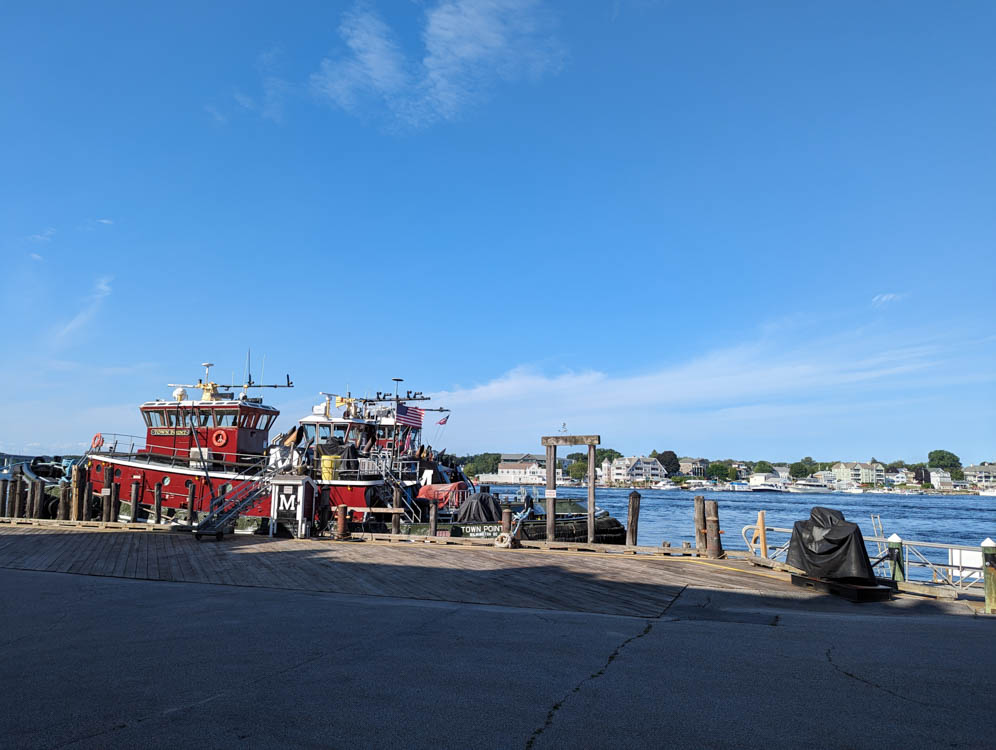

Stop 14 – Moffatt-Ladd House
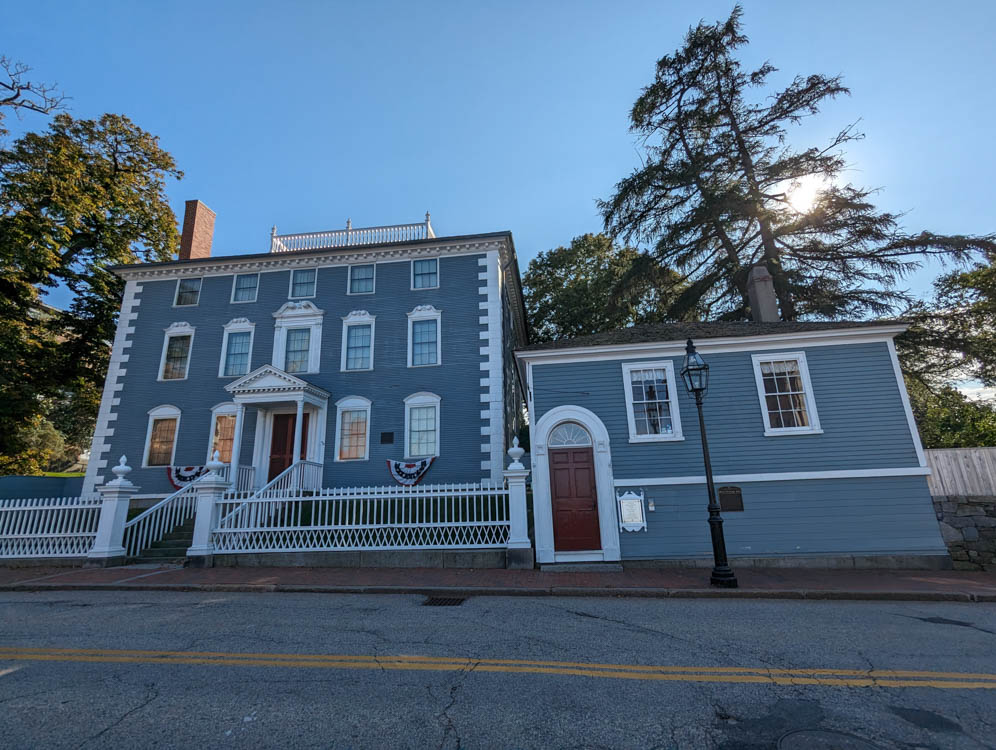
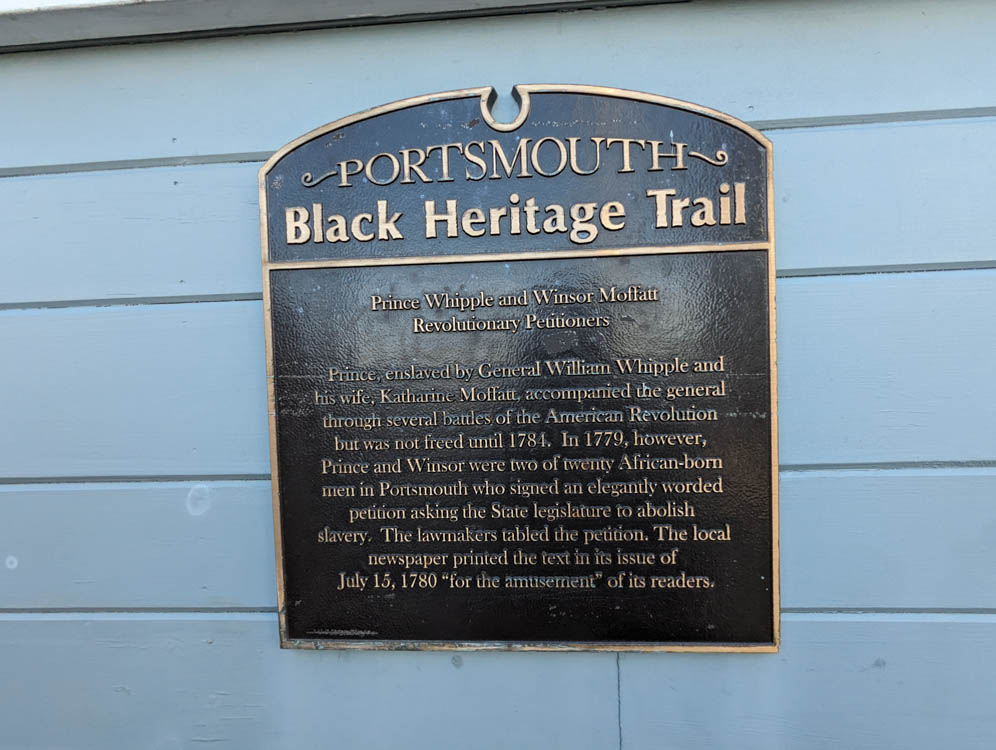
Stop 15 – Black Whipple House

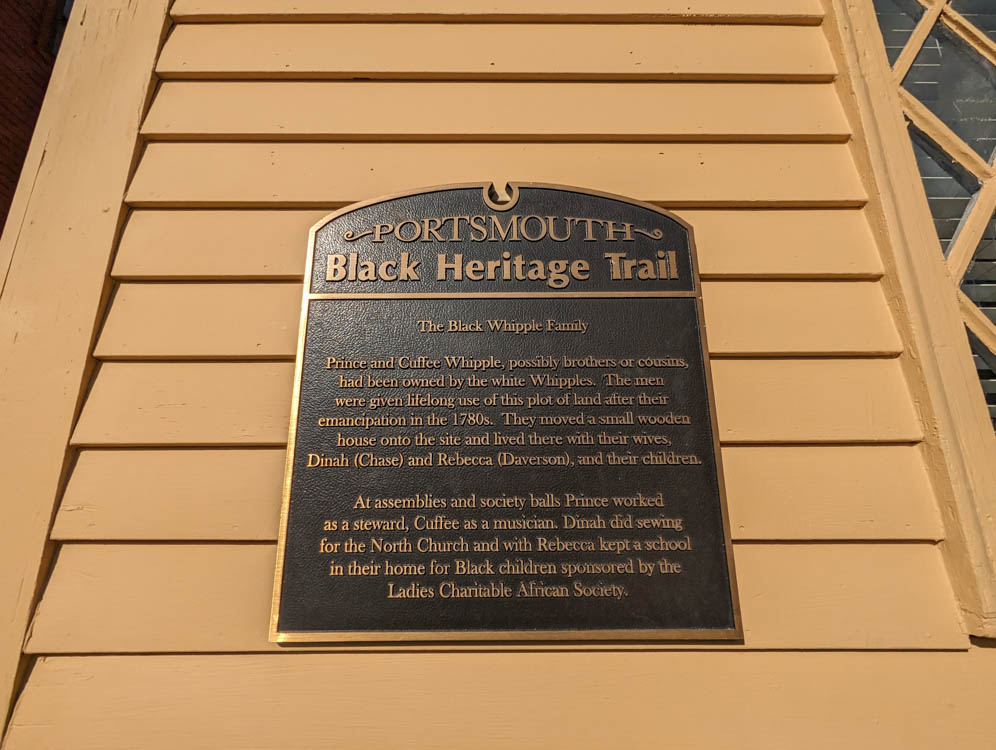
Stop 16 – Meeting Rooms
This building has been painted since the guide book was made and we were unable to find the plaque anywhere. These rooms were used in 1919 by the “Our Boys’ Comfort Club – renamed the Lincoln American Community Club – “offering social evenings for… darker racial groups in the service stationed in the area, as well as Civilian Colored People.”
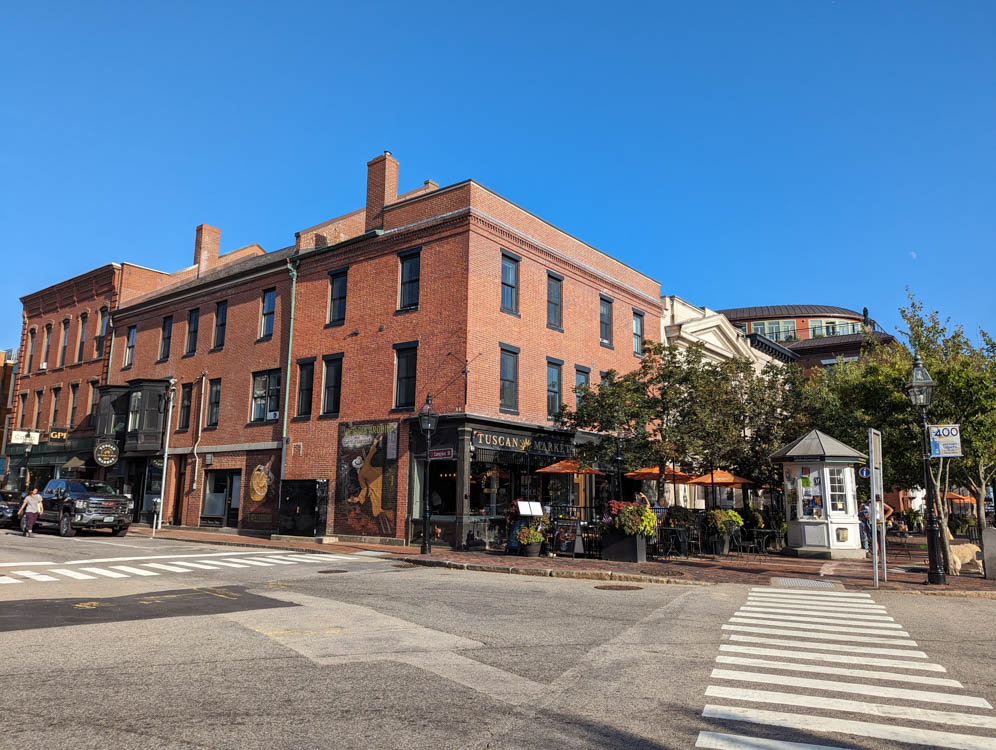
Stop 17 – Town Pump & Stocks
A snippet from the guide book about this location. “Curfews were set periodically [brown and black people of color] with violation punishable by lashing usually at the town pump that stood here.”
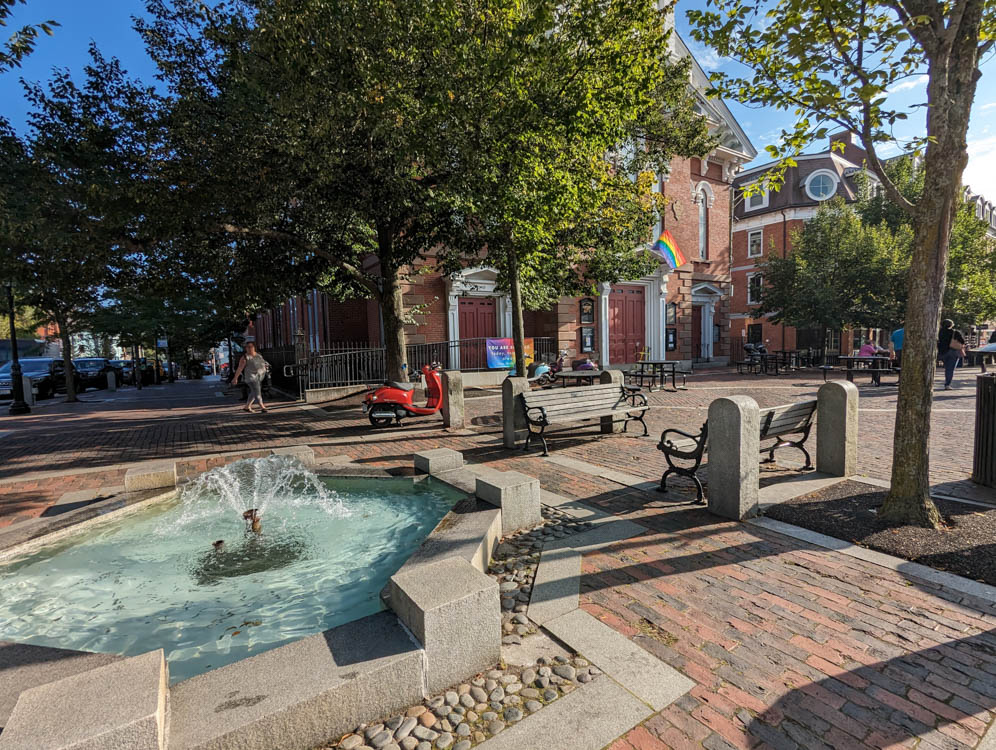
Stop 18 – North Church
Sneaky little plaque in the corner behind the fence.
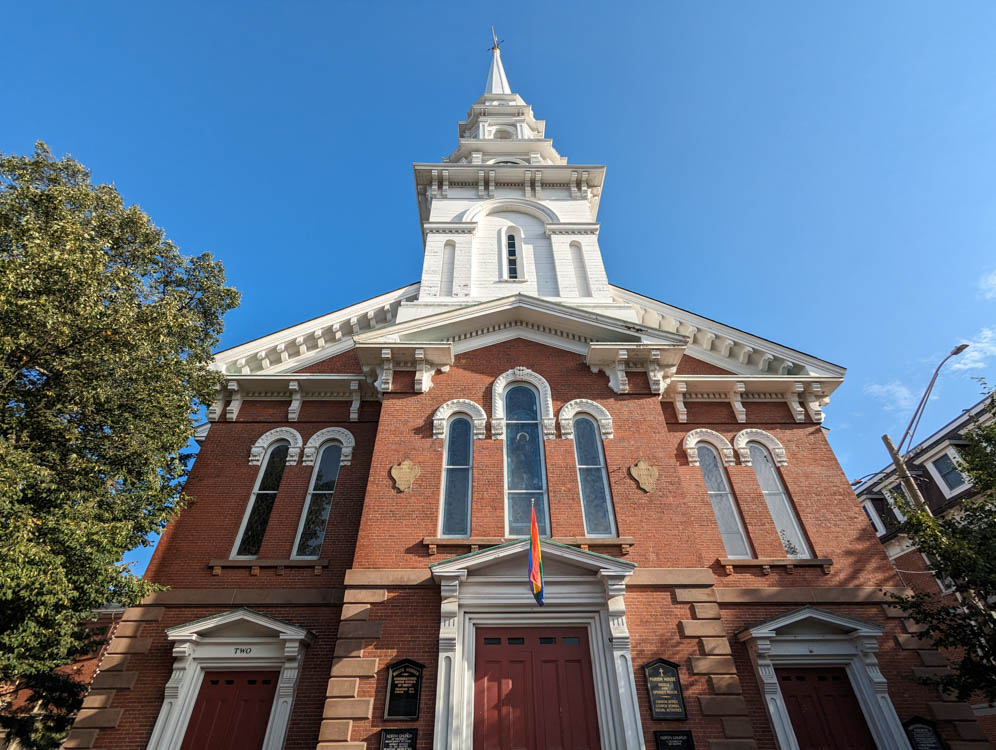


Stop 19 – Pomp & Candace Spring House & Bakery
The original location is now a bank parking lot. I’ve attached a photo of the information provided by the guide book for this stop.


Stop 20 – The Music Hall


Stop 21 – John Paul Jones House
This house is famous as a lodging place for a naval war hero from the Revolution. What’s left out of that story is that this beautiful home was built by a free, black, housewright in 1758, Hopestill Cheswell.


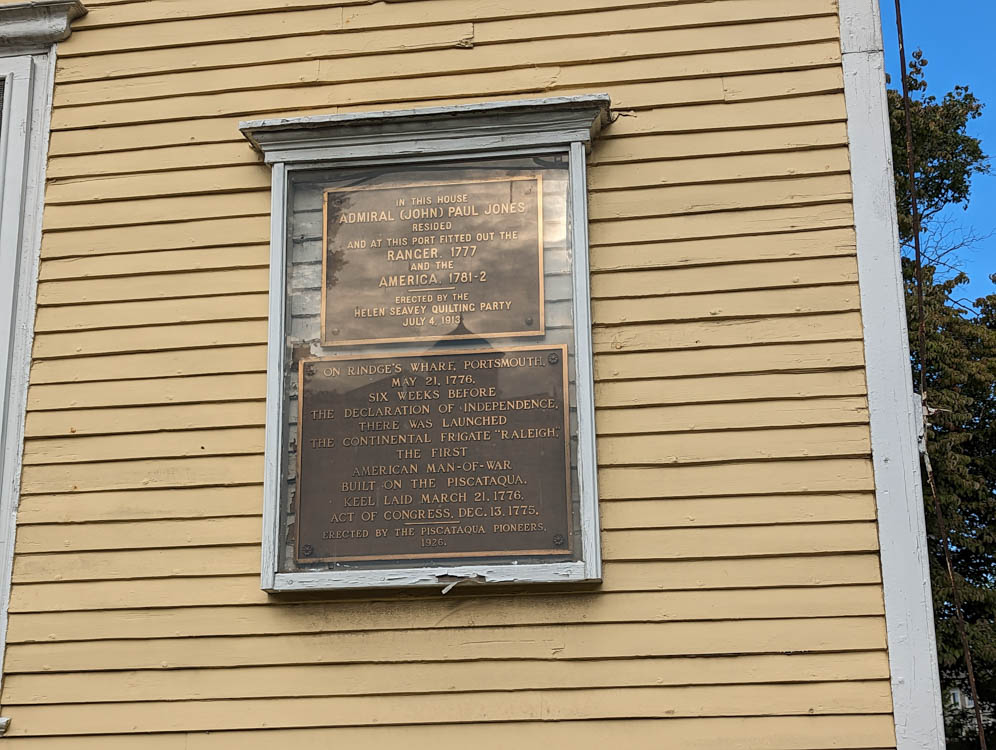
Stop 22 – Rockingham House
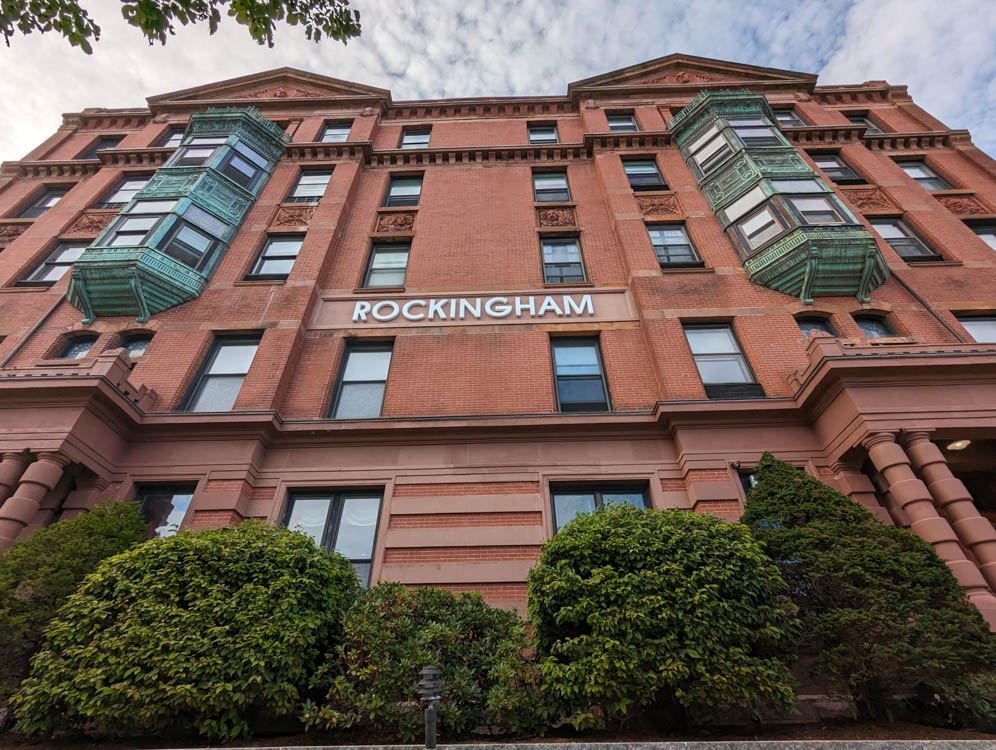
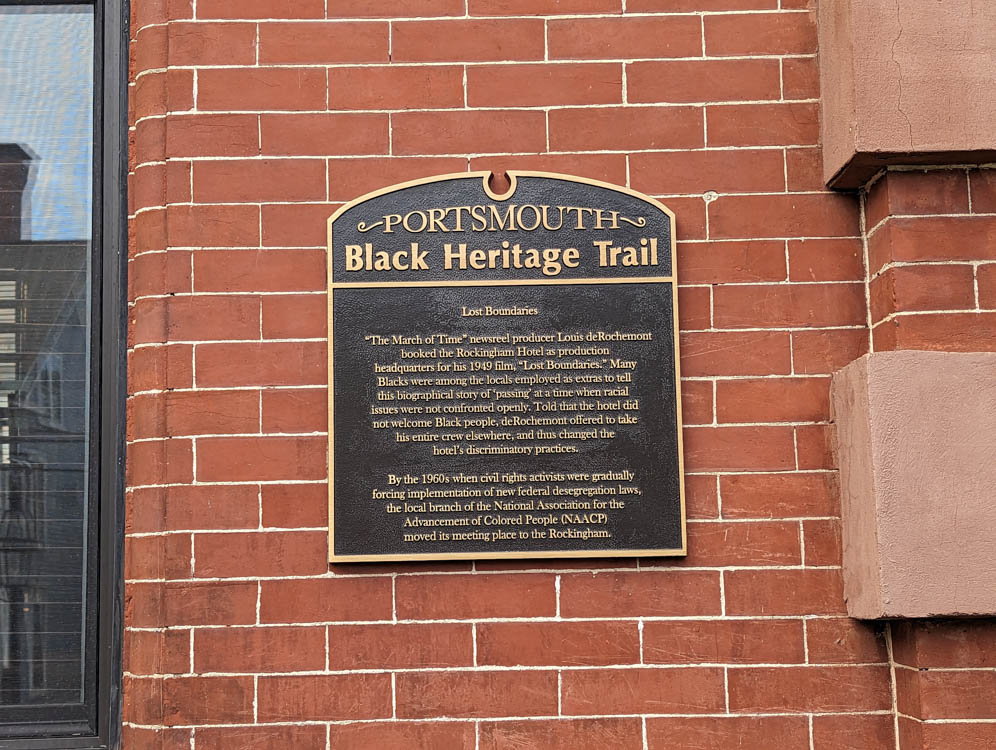


Stop 23 – The African Burying Ground
This stop is sobering. This was the burial ground for early black men and women in Portsmouth when the town was small. This was on the outskirts. But over time the city expanded and homes were built over this site. In the guide book you can see where their graves are mapped out under the street. In 2015 the remains of 13 persons were returned after study and reinterred in plain pine coffins when the park was dedicated during Memorial Day weekend.
This sculpture is to symbolize Mother Africa and her sons (and daughters), (heartbreakingly) forever separated, but almost touching. You can read more about it in the photos below.
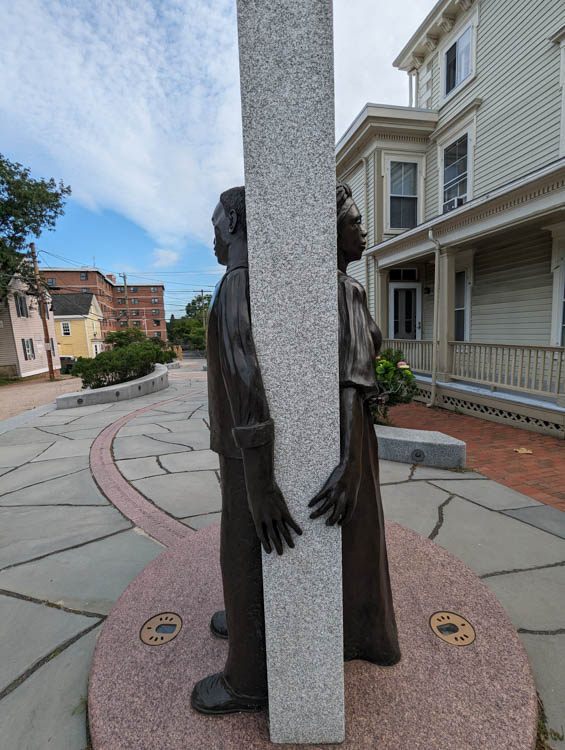
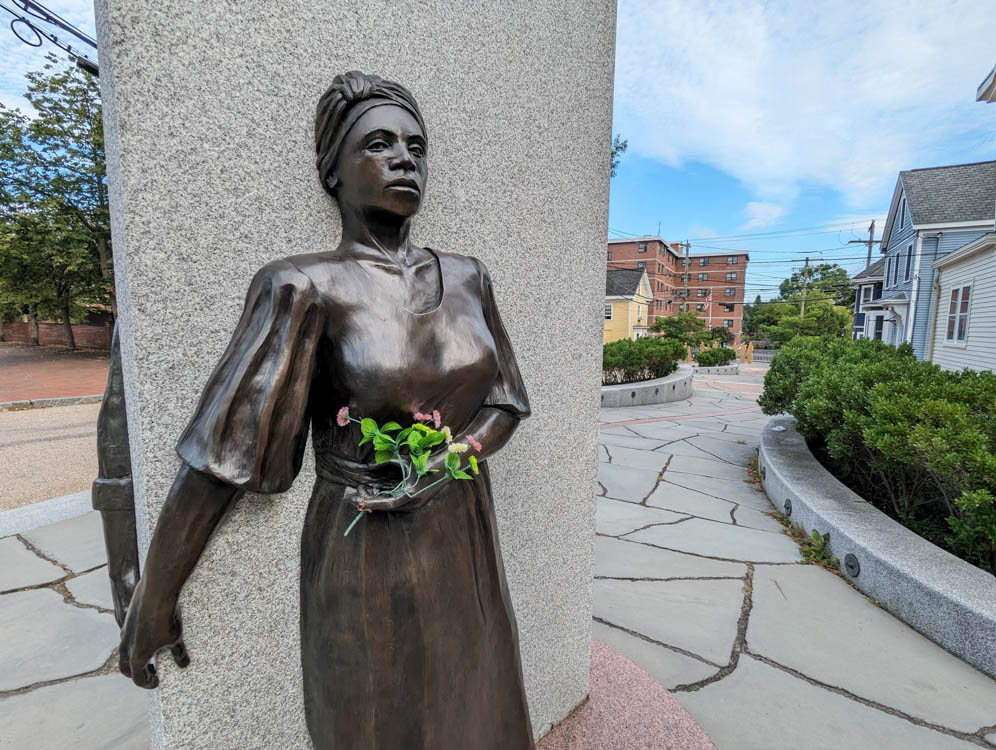

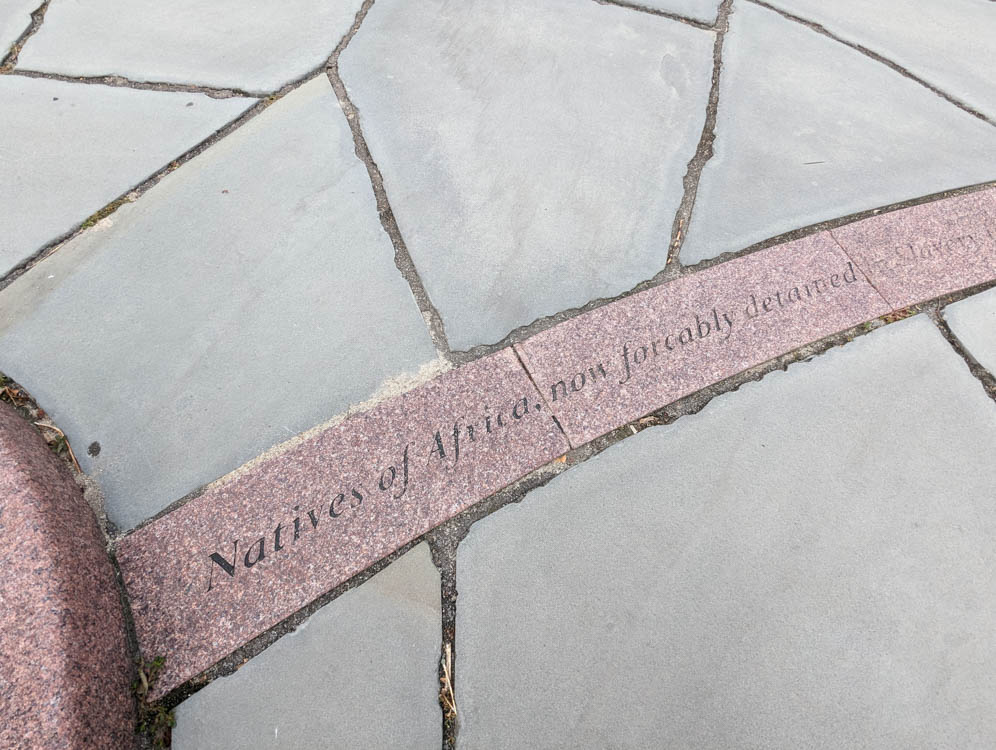

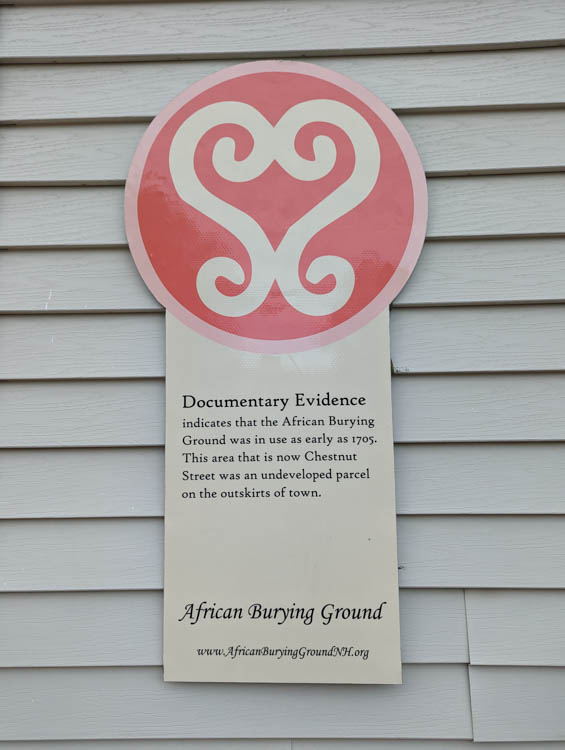
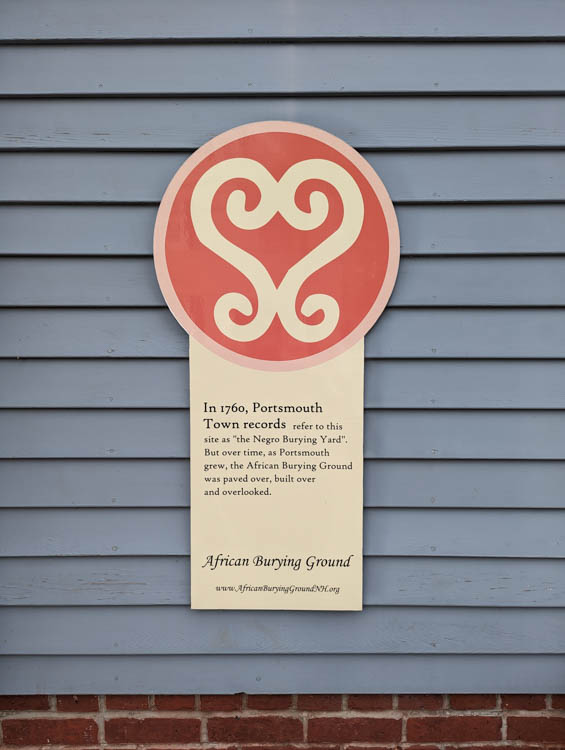
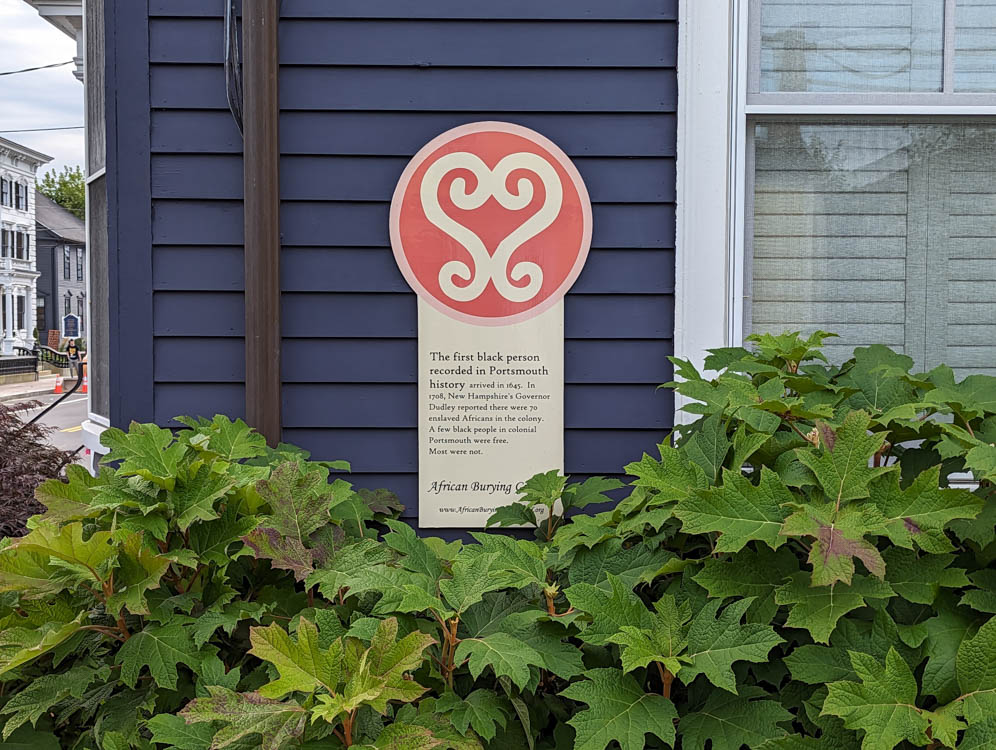
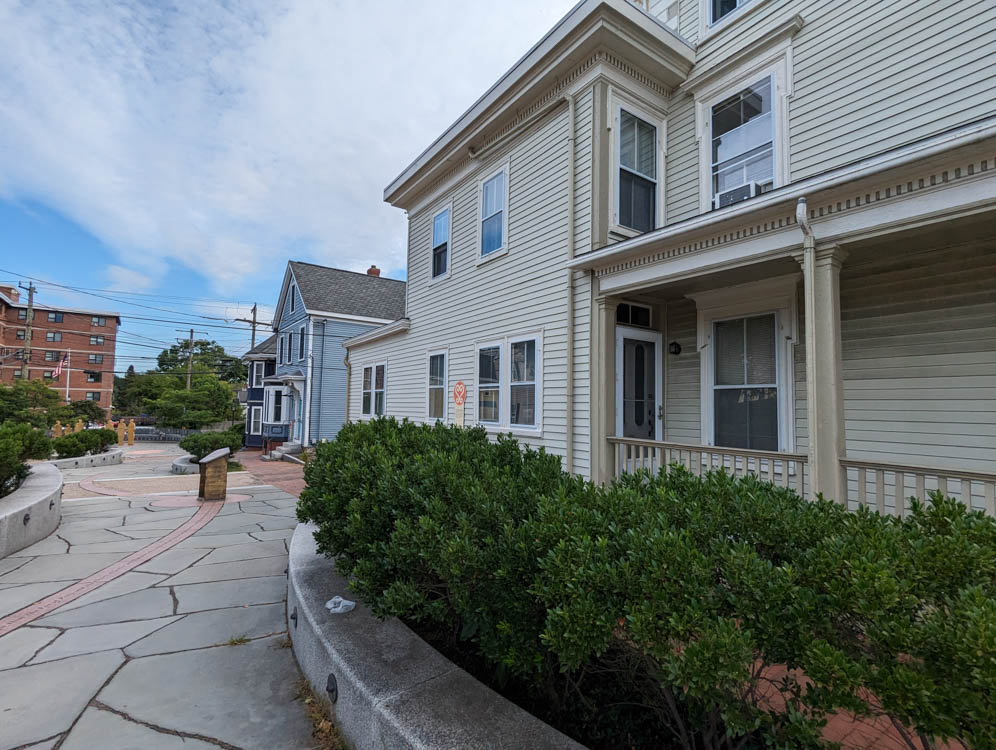
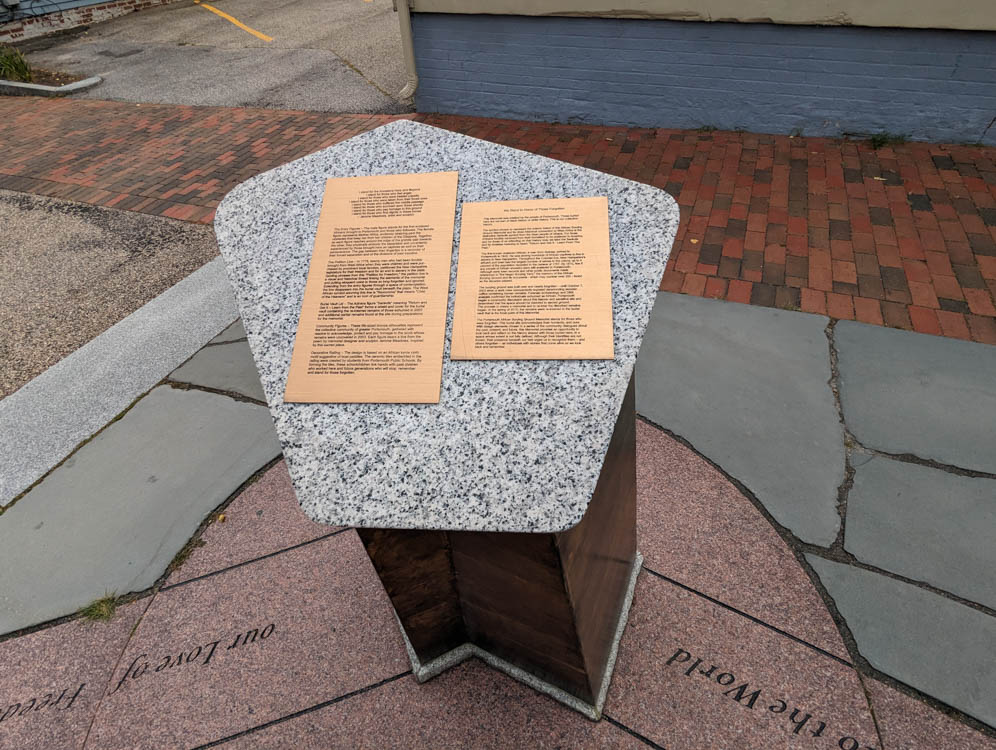

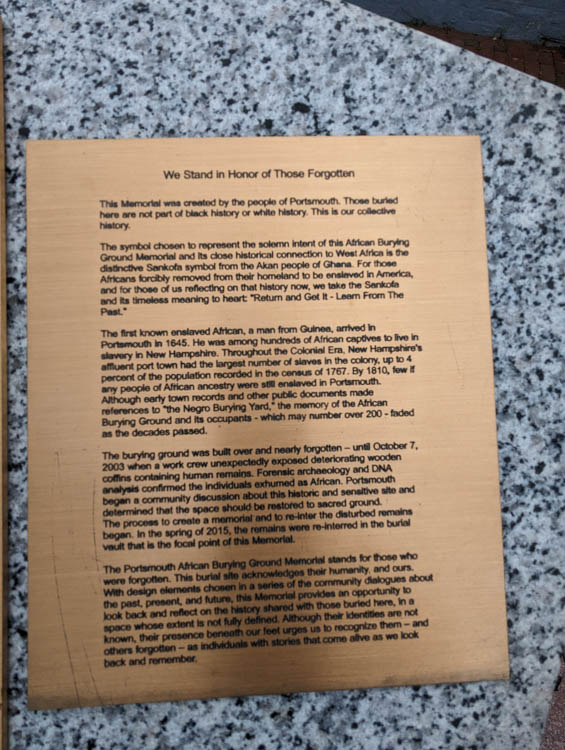
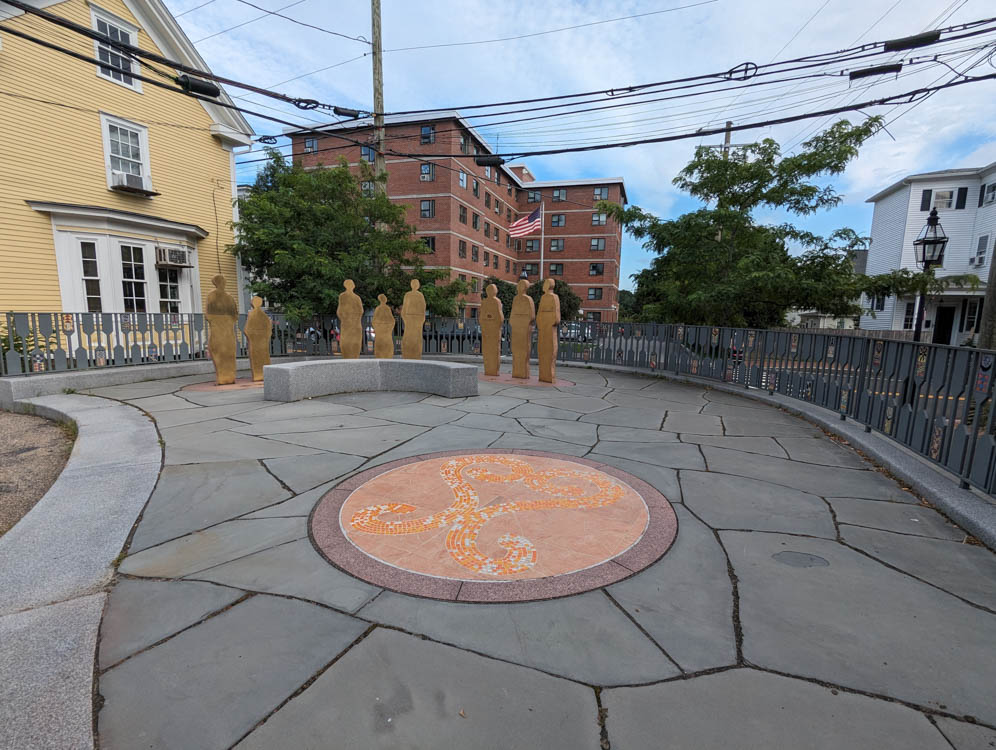

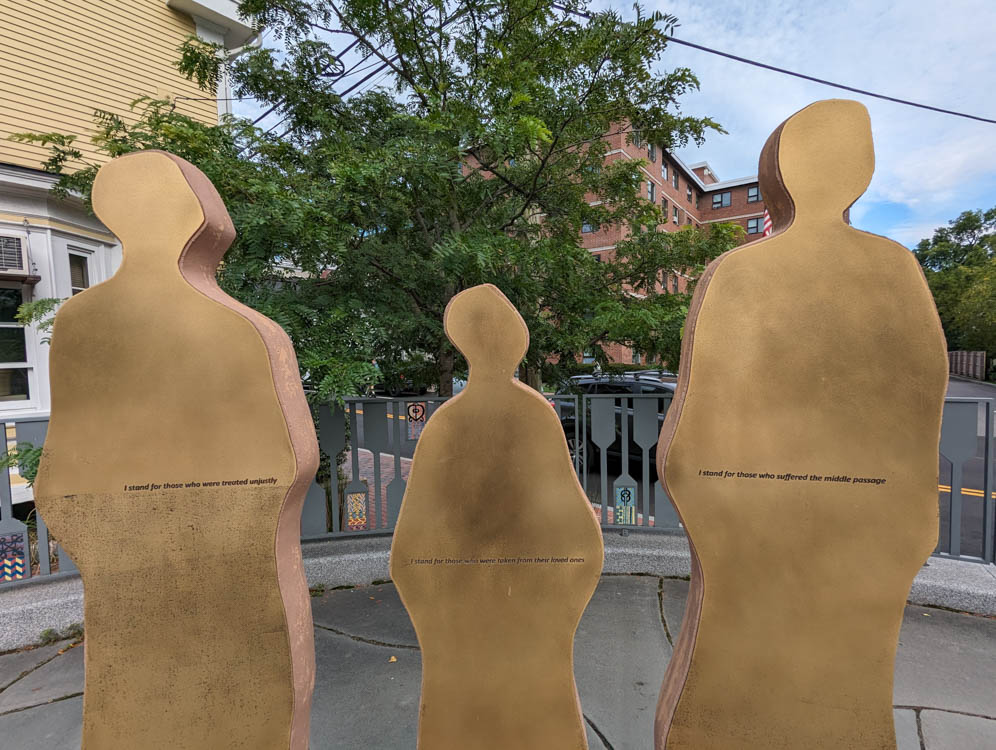
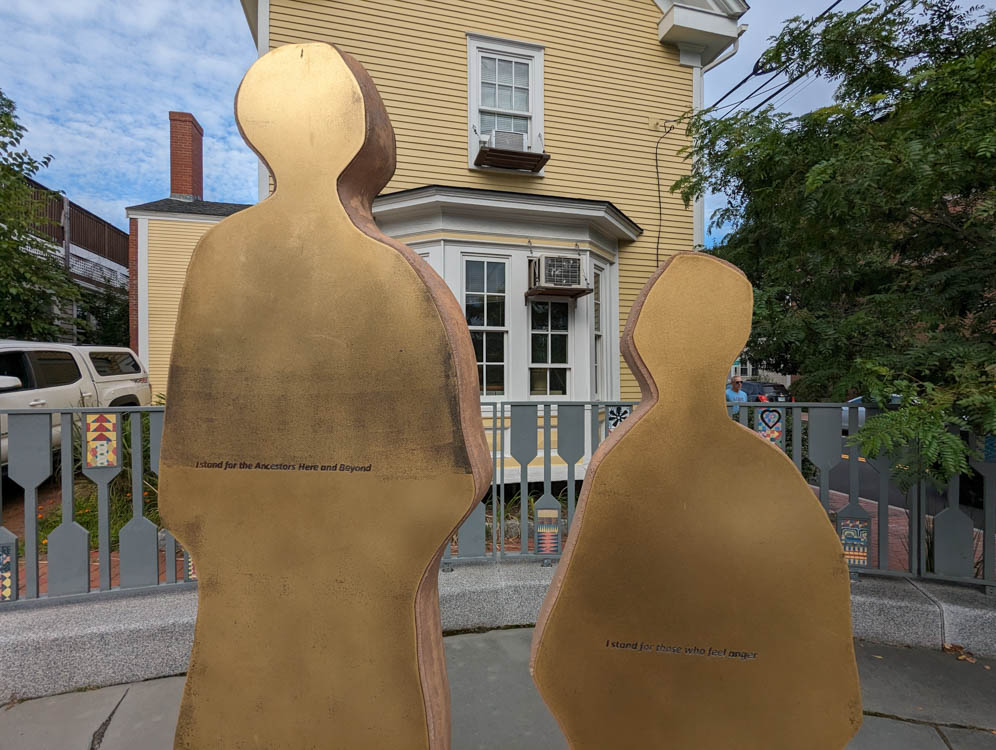
Stop 24 – South Church
Another sneaky plaque location – this time it’s up high on the building.

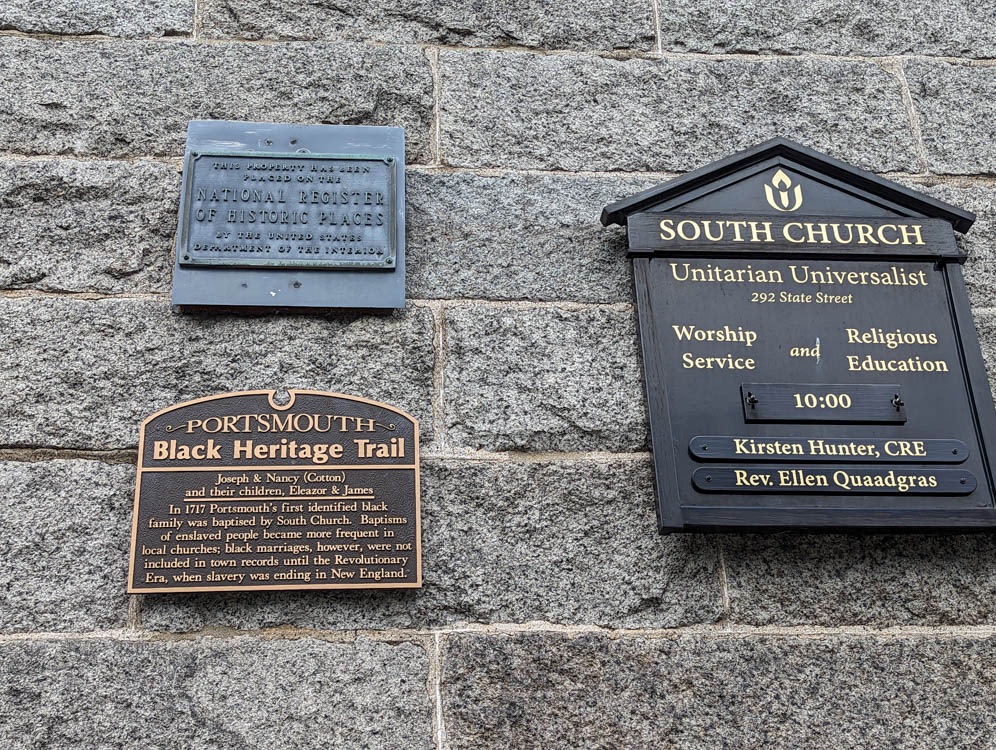
As I mentioned above, there are a few other sites outside of downtown Portsmouth, NH that we didn’t get to. There are also events that the Black Heritage Trail of NH often hosts. I was invited to come to a walk that ended at the African Burying Ground in honor of the 1963 March on Washington, but I was unable to attend. They had participants coming to walk that had been at the original march in 1963. You can find out more about what they have going on, in addition to details about the free Black Heritage Trail of NH, on their website.
So glad you guys made it there, and thanks for sharing snippets from the guide. You let me experience the trail again from afar, all over again, with the fondness I had the first time.